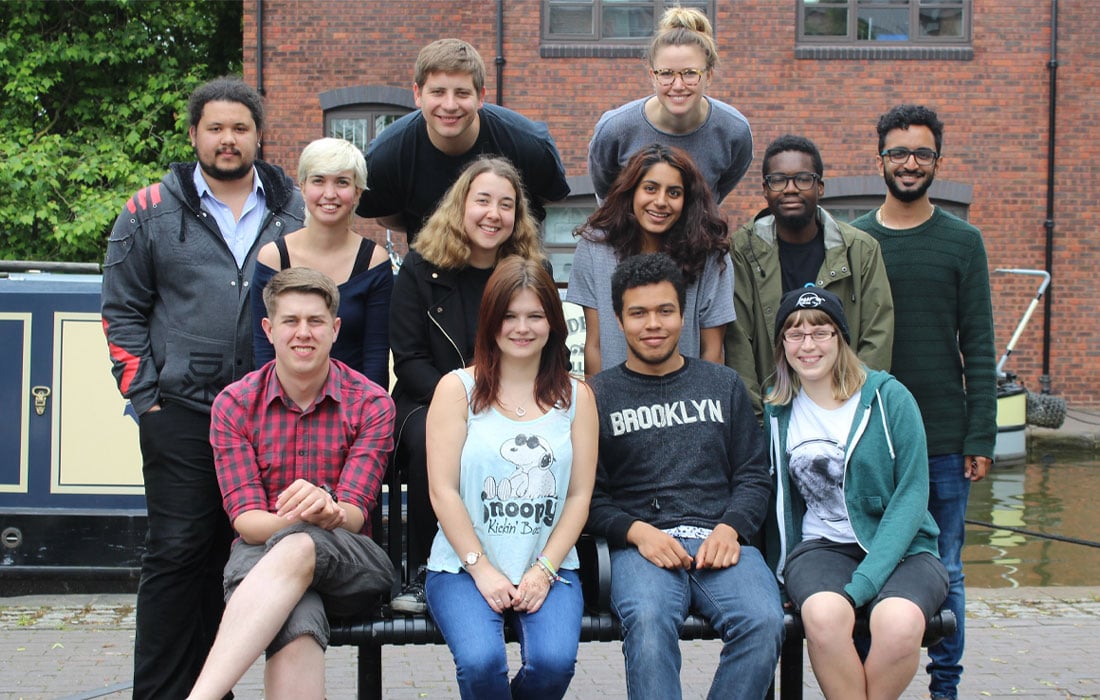
Developing strong and lasting connections with young people can have strategic benefits for your organisation
Photo: Upstart Projects
Giving youth a voice
Engaging with young people is a sound investment in future audiences, says Annabel Thomas – provided you are clear about why and how you are doing it.
Youth engagement is key when considering a strategy for growing audiences over time. Indeed, many studies show that early exposure to the arts is a driver for participation as an adult. But it’s not enough to tick the box. You’ll want to know that you’re hitting the right note with your youth offer and that it will inspire a lifelong love of the arts for the young people you serve.
Good practice
Before thinking about the ‘what’, let’s consider the ‘why’. A successful youth engagement strategy needs to work for both the organisation and the young people involved.
“In music education, we are the fossils really…we need to know what is relevant to children and young people and accept that their voice is important”
Diana Walton, Director of Upstart Projects, whose mission is to increase young people’s voice in arts and culture, says: “You need to be clear about why you want to engage with young people and whether they’re even the right audience for what you’re doing. There might be all manner of reasons why an organisation wants to work with young people, but you need to be clear about why it’s right for you and how it fits with your strategy and aims as an organisation.”
Once you’ve established what you want to achieve, you’ll be in a much better position to choose an approach. For example, if your goal is to grow and diversify your audience for Shakespeare productions, then you might run a series of workshops for local schools. Or you could hold an open house event and invite local families to attend.
Julia O’Keefe, Learning Co-ordinator at the Alhambra Theatre in Bradford, says: “We had 209 students doing A Midsummer Night’s Dream on stage and made it a free event so they could bring all their families. A lot of those people have been back to the theatre, people who had never been before.”
Once you’re ready to go beyond engagement to participation, there are a number of models you could follow. Upstart Projects suggests Hart’s Ladder of Participation to help clarify what you are trying to achieve.
However you choose to engage with young people, to develop a meaningful and lasting connection, they must value your offer. Bridget Whyte, CEO of Music Mark, explains why they chose ‘Youth voice’ as the theme of their 2018 conference: “In music education, we are the fossils really… we need to know what is relevant to children and young people and accept that their voice is important.”
Online presence
Digital modes of communication are the most common way young people get information and engage with others, so you’ll need a digital strategy to reach out to them and keep them engaged.
The level of involvement you choose will depend on the core purpose of your organisation and your goals, but channelling young people’s voices through your online presence is a powerful way to strengthen your youth offer. Music Mark allows young people to take over its Instagram or Facebook channels. If you’re not sure how you would go about this, you could get involved with the Children’s Commissioner’s Takeover Challenge.
Measuring the impact
At its most simple, an indicator of success is the length of time that young people have been involved with your organisation. Or if you are looking for a way to demonstrate tangible outcomes around the quality and value of your youth offer, then you might consider offering a qualification such as Arts Award.
How you determine the effect of your youth offer on future audiences will vary depending on the time and resources available. Whatever system you use, by spending some time with your box office system, CRM or just a spreadsheet, you can spot patterns to see where the trends are to inform your programming. Setting goals around audience make-up will help you see if your development initiatives are on track.
You need to be prepared to play the long game if you are to capture truly meaningful data on the impact of your youth engagement strategy. But if it leads to a more diverse and engaged audience in the future, then it’s a worthwhile investment.
Online resource
To support anyone looking to develop an existing youth offer or set up programmes that add real value, we have developed an online resource offering practical examples of how to engage successfully with young people in various arts settings. The resource was developed with input from arts organisations and, crucially, the young people they serve.
Annabel Thomas is Arts Development Manager at Trinity College, London.
www.trinitycollege.com

Join the Discussion
You must be logged in to post a comment.